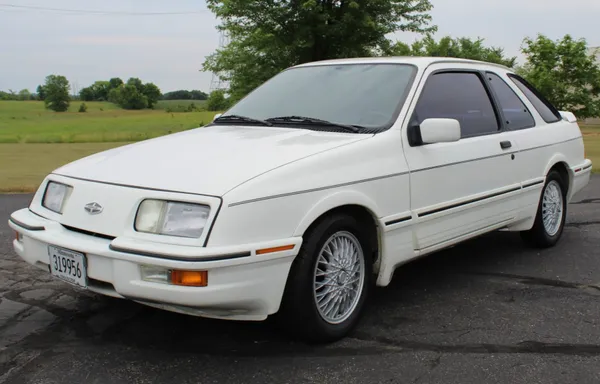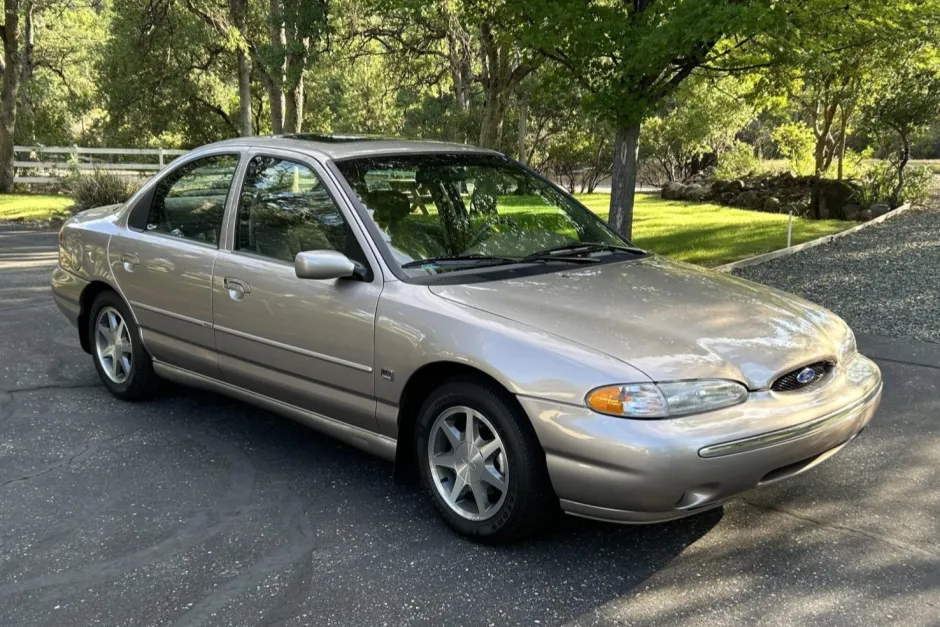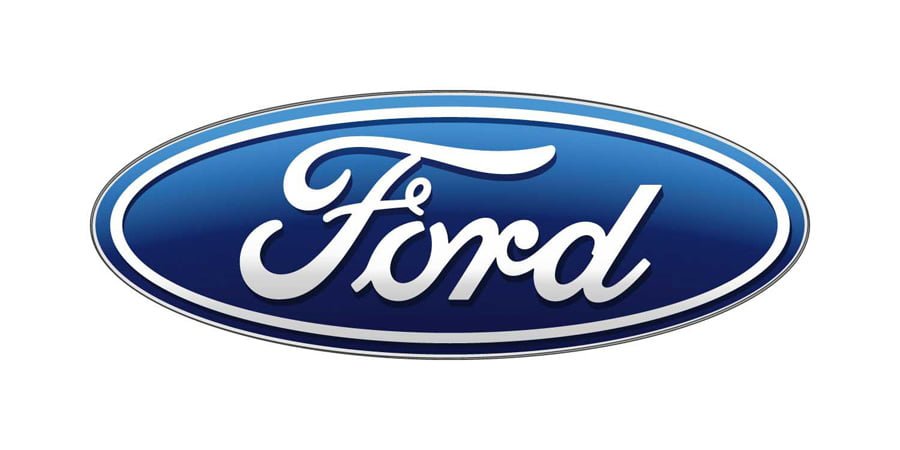Introduction

Famous Ford Flops #1 - The Edsel Debacle
The Edsel Debacle is a significant chapter in automotive history, marked by the launch and subsequent failure of the Ford Edsel brand. Here’s a detailed overview:
Background and Launch:
- Introduction: The Edsel was introduced by Ford in the late 1950s, named after Edsel Ford, son of the company’s founder, Henry Ford.
- Launch Date: The brand was officially launched in 1957, amid much anticipation and fanfare.
- Market Positioning: Positioned as a mid-priced car, the Edsel was intended to fill the gap between Ford and Mercury, targeting the burgeoning market for medium-priced vehicles.
Factors Contributing to its Failure:
- Styling Choices: The Edsel’s distinctive vertical grille, unique styling features, and unconventional design choices were polarizing and failed to resonate with consumers.
- Economic Downturn: The late 1950s witnessed an economic downturn, impacting consumers’ willingness to spend on non-essential items like cars.
- Competition: The Edsel faced fierce competition from within Ford’s own lineup, particularly with the Mercury and Ford brands, causing internal competition and market confusion.
- Marketing Challenges: Despite a significant marketing campaign and heavy investment, the marketing efforts failed to generate sufficient interest and positive reception.
Legacy and Lessons Learned:
- Production Halt: The Edsel brand struggled to gain traction in the market, leading to financial losses for Ford. Eventually, in 1959, Ford decided to discontinue the Edsel brand after just three model years.
- Financial Impact: The Edsel’s failure resulted in substantial financial losses for Ford, making it one of the most infamous commercial failures in automotive history.
- Lesson for the Industry: The Edsel Debacle remains a cautionary tale for the automotive industry, emphasizing the importance of market research, consumer preferences, and effective marketing strategies.
The Edsel’s failure has become a case study in business schools, illustrating the importance of understanding consumer expectations and the potential consequences of misjudged product launches.
The brand’s name has since become synonymous with commercial failure, but it also serves as a reminder of the unpredictable nature of the automotive market.

Famous Ford Flops #2 - Pinto: A Flaming Controversy
The Ford Pinto is infamous for the controversy surrounding safety concerns and a design flaw that led to severe consequences. Here’s the story of the Pinto, often referred to as “A Flaming Controversy”:
Introduction of the Ford Pinto:
- Launch Date: The Ford Pinto was introduced in 1971 as a compact car, positioned as an economical and affordable choice for consumers.
- Design Emphasis: The Pinto was designed to be lightweight, fuel-efficient, and competitively priced to meet the demand for smaller, more economical cars during the early 1970s.
Safety Concerns and Infamous Incidents:
- Rear-End Collision Issue: The most significant controversy surrounding the Pinto was related to its fuel tank design. The placement of the fuel tank in the rear made it vulnerable to rupture in the event of a rear-end collision.
- Fuel Leak Risk: The design flaw increased the risk of fuel leakage and, in some cases, resulted in fires when the vehicle was involved in a collision.
- Internal Documents: Internal Ford documents later revealed that the company was aware of the safety issues during the Pinto’s development but chose not to address them to meet tight production schedules and cost constraints.
Impacts on Ford’s Reputation and Safety Standards:
- Legal Battles: Ford faced numerous lawsuits related to injuries and deaths caused by fires in Pinto collisions.
- NHTSA Investigation: The National Highway Traffic Safety Administration (NHTSA) conducted an investigation into the Pinto’s safety concerns, which further exposed the negligence in prioritizing safety.
- Financial Consequences: Beyond legal costs, the Pinto controversy had a significant impact on Ford’s reputation, leading to a decline in sales and a tarnished image.
Repercussions and Legacy:
- Recall and Modifications: In 1978, Ford initiated a recall of the Pinto models, implementing modifications to address the safety issues.
- Legal Precedent: The Pinto case became a landmark in product liability law, highlighting the responsibility of automakers to prioritize safety over cost considerations.
- Impact on Industry Standards: The Pinto controversy prompted the automotive industry to reassess safety standards and prioritize crashworthiness in vehicle design.
The Ford Pinto controversy remains a stark reminder of the ethical dilemmas faced by corporations when balancing cost considerations with consumer safety. The legacy of the Pinto is etched in automotive history as a cautionary tale that influenced safety regulations and corporate responsibility in the industry.

Famous Ford Flops #3 - The Merkur Misstep
The Merkur Misstep refers to Ford’s attempt to introduce the Merkur brand into the U.S. market during the 1980s. Here’s an overview of this famous Ford flop:
Introduction of the Merkur Brand:
- Concept: In the early 1980s, Ford sought to introduce European-designed cars to the American market under a new brand called “Merkur,” which is the German word for “Mercury.”
- Imported Models: The Merkur brand primarily featured models imported from Ford of Europe, aiming to offer American consumers a taste of European performance and sophistication.
Challenges in Market Positioning and Consumer Reception:
- Brand Recognition: The Merkur brand faced challenges in establishing itself and gaining recognition among American consumers. The name was unfamiliar, and the concept of a separate brand within the Ford family was not well-received.
- Pricing and Competition: The Merkur models, such as the XR4Ti and Scorpio, were positioned as premium European cars, but they faced tough competition from established luxury and performance brands.
- Consumer Misperceptions: Some consumers found it difficult to associate the Merkur models with Ford, leading to confusion and a lack of trust in the new brand.
Discontinuation and Aftermath:
- Sales Challenges: The Merkur brand struggled with low sales numbers, failing to meet Ford’s expectations.
- Market Exit: Due to the challenges in gaining market acceptance and the overall lackluster performance, Ford decided to discontinue the Merkur brand in the U.S. by the early 1990s.
- Legacy: The Merkur Misstep became a symbol of the difficulties in introducing a new brand and convincing consumers to embrace a distinct European-influenced lineup within the Ford portfolio.
The Merkur brand’s misstep highlighted the complexities of brand introduction and consumer perception in the automotive industry. While Ford’s attempt to bring European flair to the U.S. market was ambitious, the challenges in marketing, brand recognition, and consumer preferences ultimately led to the demise of the Merkur brand.
Today, the Merkur Misstep remains a notable case study in the automotive business, emphasizing the importance of understanding the market and consumer expectations when introducing a new brand.

Famous Ford Flops #4 - The Ford Contour and Mystique
The Ford Contour and Mystique, introduced in the mid-1990s, represent a chapter in Ford’s history marked by challenges in the compact sedan market. Here’s an overview of “The Ford Contour and Mystique” story:
Launch and Positioning in the Midsize Sedan Market:
- Introduction: The Ford Contour and its Mercury counterpart, the Mystique, were introduced in 1995 as replacements for the Ford Tempo and Mercury Topaz.
- Compact Design: Positioned as compact sedans, the Contour and Mystique aimed to offer a more modern and stylish alternative in the midsize sedan segment.
Issues with Design and Performance:
- Styling and Size: While the Contour and Mystique were praised for their sleek design, some consumers found them smaller than their predecessors, creating a perception of reduced interior space.
- Mechanical Problems: Both models faced issues with mechanical reliability, including engine problems and transmission issues, which impacted their overall performance and contributed to a decline in consumer satisfaction.
- Market Confusion: The Contour and Mystique faced challenges in differentiating themselves from each other and from competitors in the crowded midsize sedan market. The lack of a clear identity contributed to market confusion.
Phasing Out and Reevaluation:
- Sales Challenges: The Contour and Mystique struggled with sales, failing to achieve the success Ford had hoped for in the competitive midsize sedan market.
- Discontinuation: Due to the ongoing challenges and the need for a strategic shift, Ford made the decision to discontinue the Contour and Mystique in 2000.
- Focus on Larger Sedans: Ford redirected its focus towards larger sedan models, including the Ford Taurus, in an effort to better align with consumer preferences and market demands.
The Ford Contour and Mystique, though designed to offer a contemporary and stylish option in the midsize sedan category, faced difficulties in terms of consumer reception, performance issues, and market positioning. The decision to discontinue both models reflected Ford’s need to reassess its approach to the midsize sedan market and pivot towards more successful segments within its lineup.
The Contour and Mystique story serves as a reminder of the complexities in navigating consumer preferences and market dynamics within the automotive industry.

Famous Ford Flops #5 - The Jaguar X-Type Experiment
The Jaguar X-Type Experiment refers to Ford’s attempt to expand the Jaguar brand into the entry-level luxury market with the introduction of the Jaguar X-Type. Here’s a detailed overview:
Acquisition of Jaguar by Ford:
- Background: Ford acquired the Jaguar brand in 1989, aiming to expand its luxury vehicle portfolio.
- Strategic Move: The acquisition was part of Ford’s strategy to diversify its product offerings and compete in the upscale automotive market.
Introduction of the Jaguar X-Type:
- Launch Date: The Jaguar X-Type was introduced in 2001 as a compact executive car.
- Market Positioning: Ford positioned the X-Type as an entry-level luxury car, aiming to attract a wider consumer base to the Jaguar brand.
- All-Wheel Drive: Notably, the X-Type featured all-wheel drive, distinguishing it from other luxury cars in its class.
Challenges and Issues:
- Platform and Perception: The X-Type shared its platform with the Ford Mondeo, a midsize family car. This led to criticisms regarding the perception of the X-Type as not distinctive enough from mainstream Ford models.
- Styling and Image: Some critics and consumers felt that the X-Type lacked the distinctive styling and exclusivity associated with the Jaguar brand.
- Sales Performance: The X-Type faced challenges in terms of sales performance, failing to meet the high expectations set by Ford for its entry into the compact luxury segment.
- Market Competition: The X-Type faced strong competition from established players in the luxury market, and its positioning as an entry-level option proved challenging.
Discontinuation and Impact:
- Production Halt: Due to ongoing challenges, Ford decided to discontinue the Jaguar X-Type in 2009.
- Legacy: The X-Type Experiment is often viewed as a less successful attempt by Ford to expand the Jaguar brand into a more accessible market segment.
Aftermath and Sale of Jaguar:
- Sale of Jaguar: In 2008, amid financial challenges and restructuring efforts, Ford sold the Jaguar and Land Rover brands to Tata Motors.
The Jaguar X-Type Experiment highlights the complexities of brand expansion and the challenges associated with positioning a luxury brand in a new market segment. The attempt to offer a more affordable Jaguar model faced hurdles in terms of perception, competition, and market dynamics.
Ultimately, the X-Type’s discontinuation marked a strategic shift in Ford’s approach to the luxury segment and paved the way for new ownership under Tata Motors.

Famous Ford Flops #6 - Ford Thunderbird (11th Generation)
The eleventh generation of the Ford Thunderbird, produced from 2002 to 2005, aimed to revive the iconic Thunderbird nameplate with a modern retro-inspired design. Unveiled to much anticipation, this iteration sought to blend classic styling cues with contemporary features.
Reasons for Lack of Success:
Styling Choices: While the retro design appealed to some, it didn’t resonate with a broader audience. The attempt to capture the nostalgia of earlier Thunderbird models may have limited its appeal, particularly among younger consumers.
Performance Concerns: The eleventh-generation Thunderbird faced criticism for its performance, lacking the power and dynamic driving experience associated with previous Thunderbirds. This contributed to a disconnect with enthusiasts and performance-oriented consumers.
Market Competitiveness: The automotive market during this period was shifting, with consumer preferences favoring fuel efficiency, practicality, and versatility. The Thunderbird’s positioning as a two-seater convertible conflicted with these emerging trends, limiting its market potential.
Comparison with Successful Thunderbird Models: Contrasting with iconic Thunderbirds of the past, such as the two-seater roadsters of the 1950s and the luxurious personal luxury cars of the 1960s and 1970s, the eleventh generation failed to capture the essence and spirit that made its predecessors memorable and successful.
Legacy and Impact: The lackluster performance in the market led to the discontinuation of the eleventh-generation Thunderbird after just a few years. While it remains a part of Thunderbird history, its legacy is often viewed as a misstep in Ford’s attempt to revive a classic nameplate.
Lessons Learned: The failure of the eleventh-generation Thunderbird underscores the importance of understanding market trends, aligning design choices with consumer preferences, and maintaining the core identity of an iconic brand. It serves as a lesson in the challenges of reimagining classic models for a modern audience and highlights the need for a holistic approach in product development.

